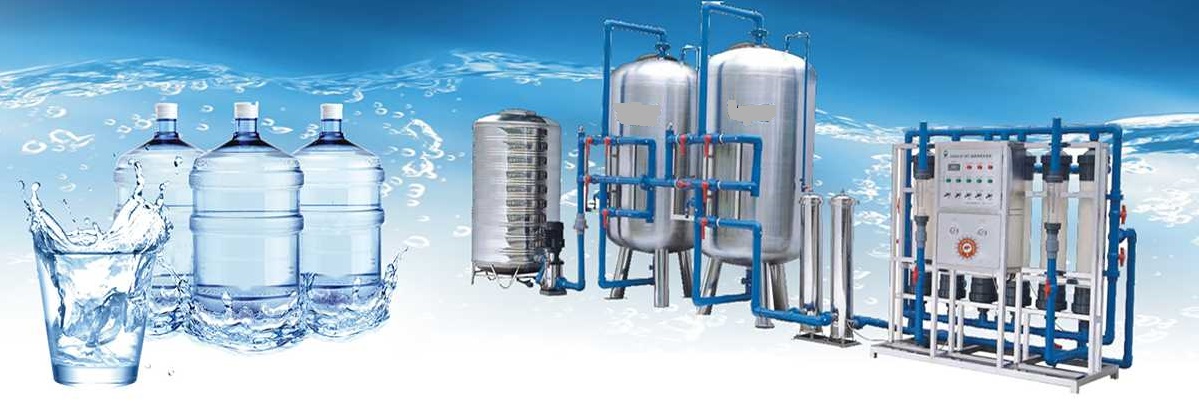Project Report For Mineral Water Plant
Introduction
Project report for Mineral Water Plant is as follows.
Mineral water is defined as water with a high concentration of dissolved minerals or gases. Natural spring water is abundant in calcium carbonate, magnesium sulphate, potassium, and sodium sulphate. It can also be infused with gases like carbon dioxide or hydrogen sulphide. Carbon dioxide or salts are used to artificially aerate distilled water to create mineral water. The mineral concentration of natural and manufactured mineral water varies widely, and in some circumstances is lower than that of regular tap water.
Mineral water plants require water from naturally occurring sources such as mountain and spring water. Such water contains minerals that have several health advantages for humans. Calcium, sodium, potassium, magnesium, and other minerals are common in mineral water. The current demand for mineral water is at an all-time high. In contrast to conventional potable water, many today choose to buy mineral water because of its ultimate cleanliness and hygiene.

Process Of Mineral Water Plant
Water Diversion & Aeration: There are two types of diversion: subsurface and surface. The subterranean portion refers to the entrance of mineral water from below earth to the above-ground outflow. To avoid surface water mingling, the mineral water must be sealed. The digging method is commonly used to redirect water. The surface component refers to the process of transporting mineral water from the proper undersea depth to the ground and then treating it. Aeration is the complete contact of raw mineral water with filtered air to remove carbon dioxide, hydrogen sulphide, and other gases and produce oxidation, generally comprising degassing and oxidation.
Primary Filtration: After aerating the raw water, filter it through a sand tank filled with quartz sand and activated carbon filter material, which removes large particles of impurities, insoluble Bacteria, viruses, and other contaminants such as suspended matter, macromolecular microorganisms, and some macromolecular organic materials. Get ready for the next step in sophisticated filtration treatment.
Sterilization: Ozone and UV sterilisation are often used in the sterilisation of bottled mineral water. Ozone sterilisation treatment: dissolve 0.01-5ppm ozone in mineral water, then fill and close the container to destroy germs and viruses. UV sterilisation treatment: sterilisation is accomplished by exposing water to ultraviolet radiation. It acts on nucleic acids, protoplasmic proteins, and enzymes via microorganisms to cause adjacent thymine bonds on DNA to synthesise dimers, causing DNA to lose its transcription ability and preventing proteins from producing by-products, resulting in sterilisation.
Filling: The process of putting sterilised mineral water into a sterilised packing container is referred to as the filling procedure. Automatic filling machines are now employed in aseptic workshop manufacturing. Every day, the floor of the filling room should be cleansed with ozone water or a disinfectant to prevent the air in the filling room from fouling the filling process. Clothes, caps, masks, and other personal items should be cleaned and replaced on a regular basis, and chlorine dioxide or other standard disinfectants should be used in the foot fool.
Packaging & Inspection: After filling and sealing, test the bottled mineral water. Set up the inspected bottled mineral water on the printed label, then put it into the box according to the packaging specifications and store it in the warehouse.
Market Potential Of Mineral Water Plant
The size of the global mineral water bottles market, which was estimated to be worth USD 283 billion in 2021, is expected to increase from USD 308.1 billion in 2022 to USD 509.2 billion by 2030, rising at a CAGR of 7% over the forecast period (2023-2030).
The increased demand for mineral water affects the broader supply chain, putting additional strain on the current facility to ramp up output. This rising demand is encouraging new entrepreneurs to build up mineral water facilities in India. The beautiful thing about this company model is that it does not require large investment while ensuring long-term prosperity for the owner.
The need for clean drinking water is rising as a result of some places’ limited access to it, which is driving product sales and the market’s expansion. In order to satisfy the increasing demand for bottled water in 2020, enterprises have improved their production capabilities, according to the International Bottled Water Association (IBWA).
This entails raising the capacity for bottling, acquiring more supplies for production and packaging, and consulting with merchants to gauge demand. As consumers place more importance on their health and fitness, the trend of nutrient-fortified water is becoming more widespread.
Project Report Sample On Mineral Water Plant
Need Help?
Create 100% Bankable Project Report

